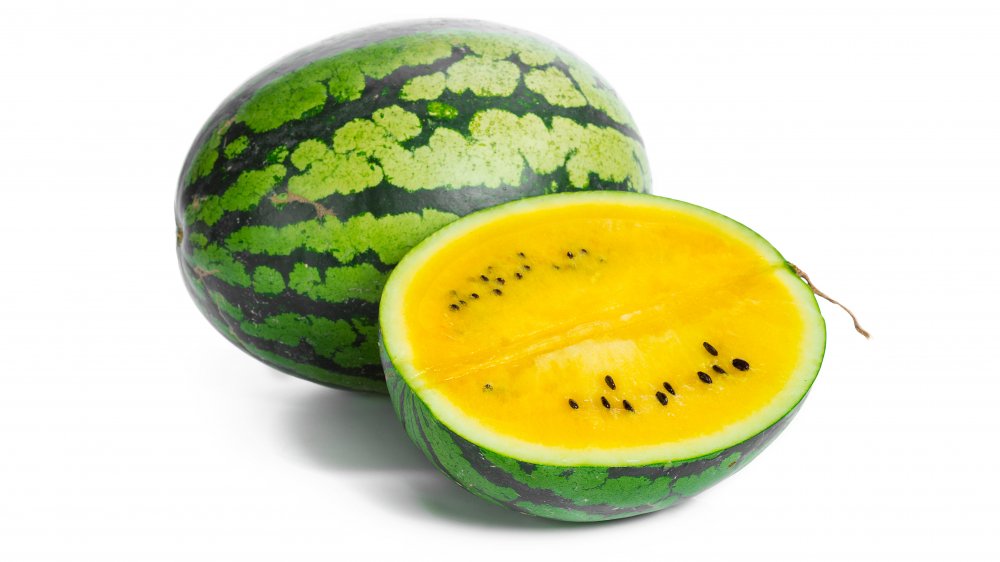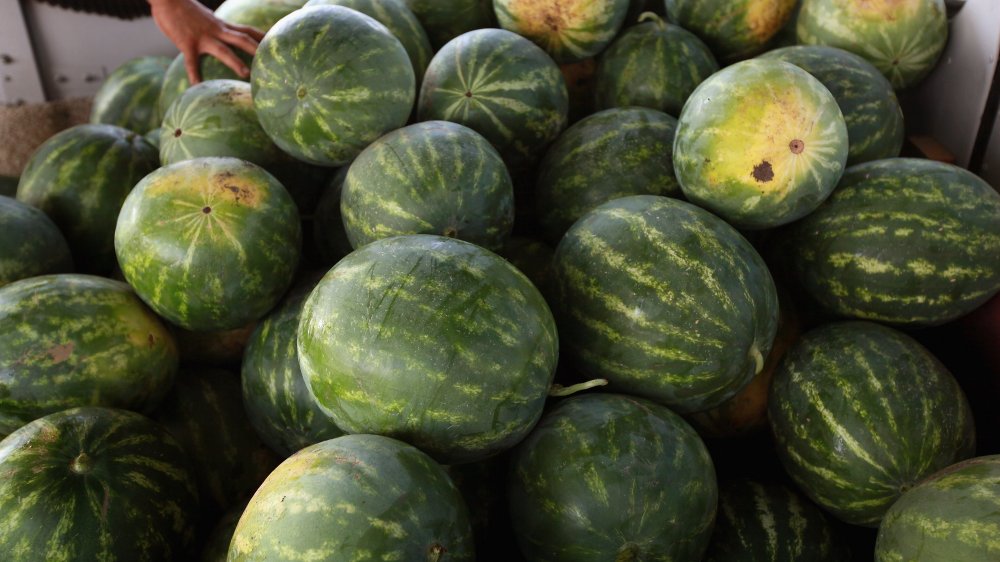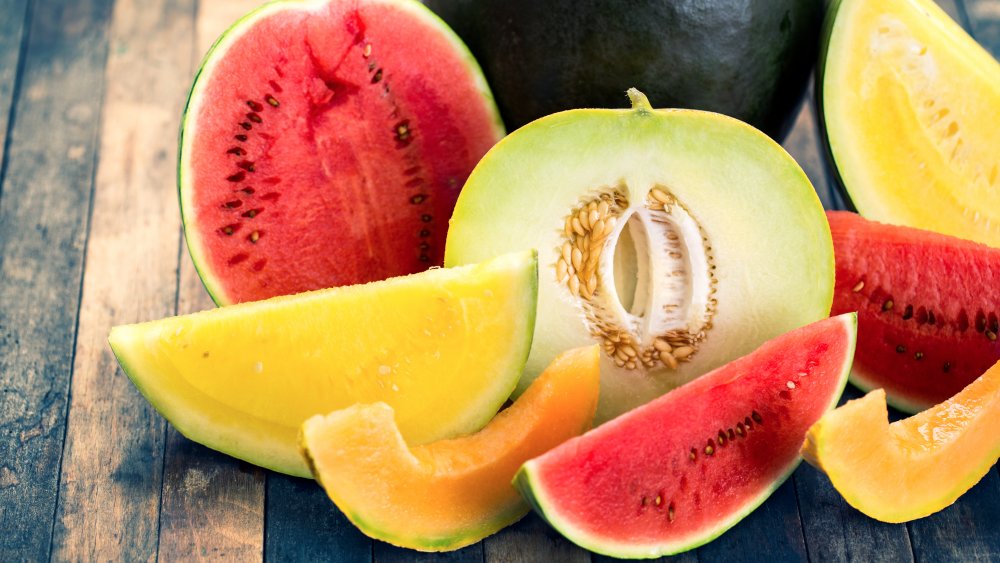The Truth About Yellow Watermelon
Who doesn't love to see colorful produce? Golden heirloom tomatoes, violet-colored carrots, orange cauliflower — with those choices you know exactly what you're getting. But what about the thrill of the unexpected, like slicing into a watermelon... and seeing yellow?
No, it's not a melon gone bad. Nor is it the result of recent genetic modification — unlike seedless tomatoes and purple raspberries (via The Guardian).
The yellow watermelon has been around for a while — it's an ancient variety of the popular fruit. Given the 1,200 varieties of watermelon that currently exist, why shouldn't there be a bright yellow one? Frankly, they're impressive-looking: Just imagine that egg yolk-yellow color being mixed into a salad, blended into a cocktail, or tossed around with chunks of red watermelon (via Southern Living).
Despite the double-take you'll undoubtedly give it, the yellow watermelon is healthy, natural, sweet, and definitely worth trying this summer (via Anadolu Agency).
How does yellow watermelon compare to red?
Yellow watermelon isn't too wildly different from the more typical red variety. It tastes similar, though not exactly the same. According to agriculturalist Bonnie Grant, it's even sweeter, and has more notes of honey (via Gardening Know How).
The bright, sunny variety of watermelon does lack lycopene, the antioxidant that can decrease the risk of cancer and diabetes. Lycopene also provides a bright pigment, which is why tomatoes and (some) watermelons are so gloriously red (via WebMD). Although yellow watermelon lacks both the antioxidant and the red color, it has other health benefits. Yellow watermelon contains a higher level of beta carotene, which, once consumed, transforms into vitamin A. Healthier eyesight, anyone? Yellow watermelon also retains many of the same health benefits of its red cousin: It has vitamin C, can help flush toxins out of your body, and it keeps you hydrated (via Spoon University).
Yellow watermelon is thought to have come first
You might not think so, but watermelon has a complex history. Horticulturist Harry Paris estimates that a parent of the watermelon originated in northeastern Africa, around Egypt and Sudan, thousands of years ago. If you think that's impressive, then try wrapping your head around the 4,000 year-old painting of a watermelon that exists in an Egyptian tomb. Paris argues that the original watermelon wasn't sweet, and it certainly wasn't red, but it did provide an important source of water amid miles of desert (via National Geographic).
Since then, the melon has flourished. In Namibia, a country just north of South Africa, the San people have spent generations utilizing the tsamma, a watermelon variety that is somewhat bland in flavor, but a valuable source of water (via Atlas Obscura). In the American South, cooks have spent years pickling watermelon rinds with salt and vinegar (via Southern Living).
But, according to firsthand historical accounts, yellow watermelon has been present for hundreds of years at least. According to National Geographic, Hebrew writings from 200 A.D. described watermelon as yellow, not red. Studies have theorized that yellow watermelon was actually cultivated before its bright red counterpart (via Organic Facts).
Not to blow your minds too much, but there's also an orange variety of our new favorite melon, appropriately named Desert King (via Gardening Know How).


